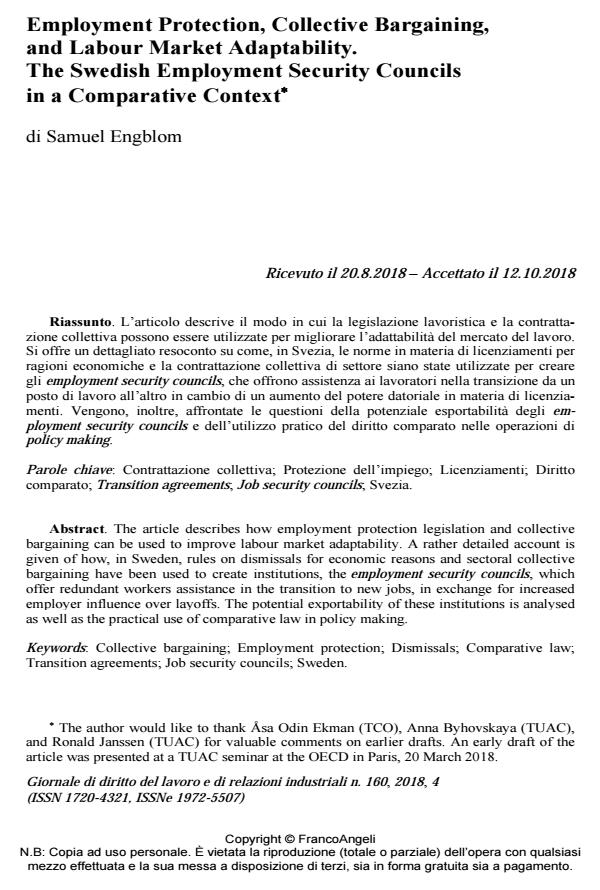Employment Protection, Collective Bargaining, and Labour Market Adaptability. The Swedish Employment Security Councils in a Comparative Context
Journal title GIORNALE DI DIRITTO DEL LAVORO E DI RELAZIONI INDUSTRIALI
Author/s Samuel Engblom
Publishing Year 2019 Issue 2018/160
Language English Pages 19 P. 887-905 File size 263 KB
DOI 10.3280/GDL2018-160009
DOI is like a bar code for intellectual property: to have more infomation
click here
Below, you can see the article first page
If you want to buy this article in PDF format, you can do it, following the instructions to buy download credits

FrancoAngeli is member of Publishers International Linking Association, Inc (PILA), a not-for-profit association which run the CrossRef service enabling links to and from online scholarly content.
The article describes how employment protection legislation and collective bargaining can be used to improve labour market adaptability. A rather detailed account is given of how, in Sweden, rules on dismissals for economic reasons and sectoral collective bargaining have been used to create institutions, the employment security councils, which offer redundant workers assistance in the transition to new jobs, in exchange for increased employer influence over layoffs. The potential exportability of these institutions is analysed as well as the practical use of comparative law in policy making.
Keywords: Collective bargaining; Employment protection; Dismissals; Comparative law; Transition agreements; Job security councils; Sweden.
Samuel Engblom, Employment Protection, Collective Bargaining, and Labour Market Adaptability. The Swedish Employment Security Councils in a Comparative Context in "GIORNALE DI DIRITTO DEL LAVORO E DI RELAZIONI INDUSTRIALI " 160/2018, pp 887-905, DOI: 10.3280/GDL2018-160009